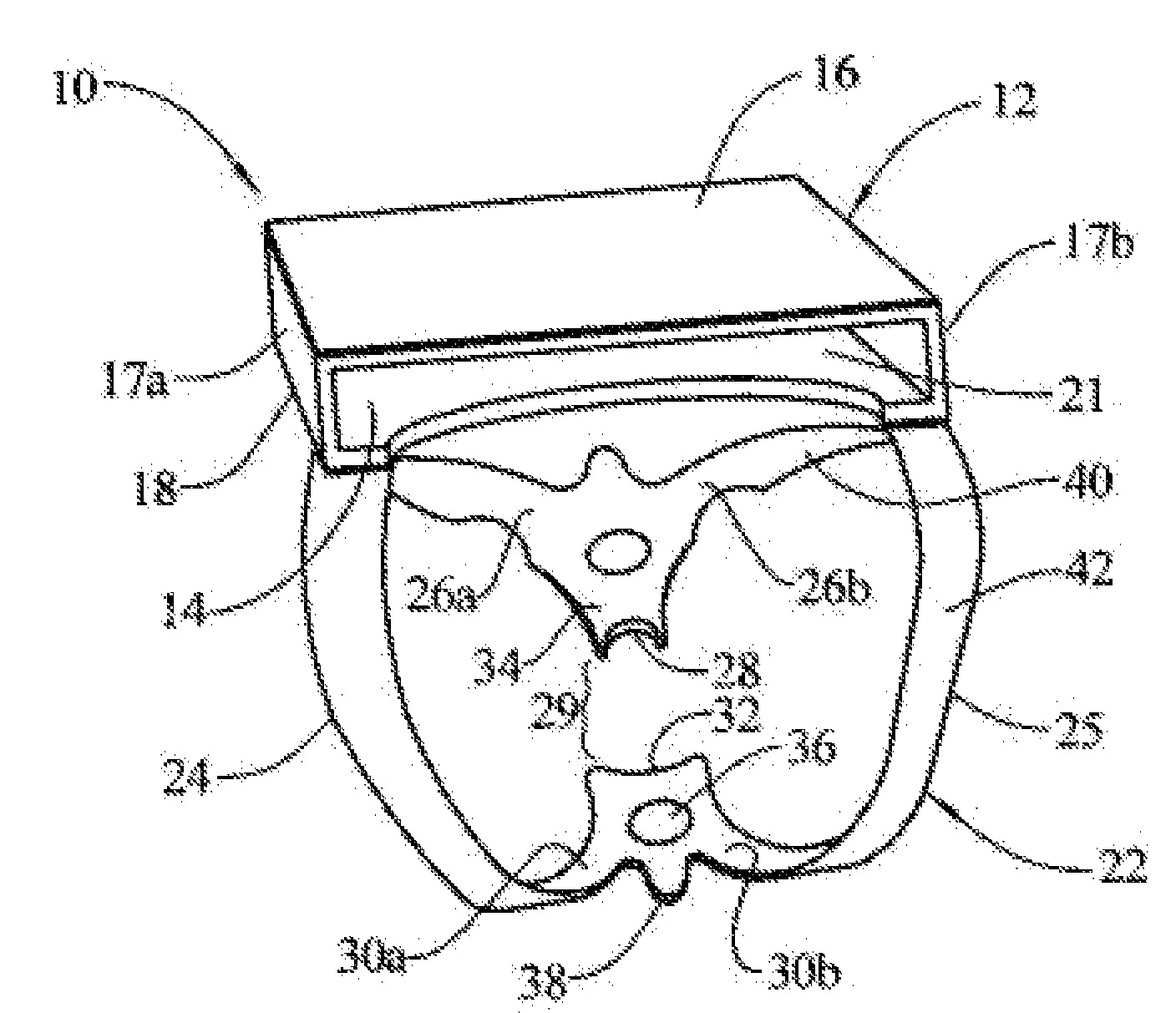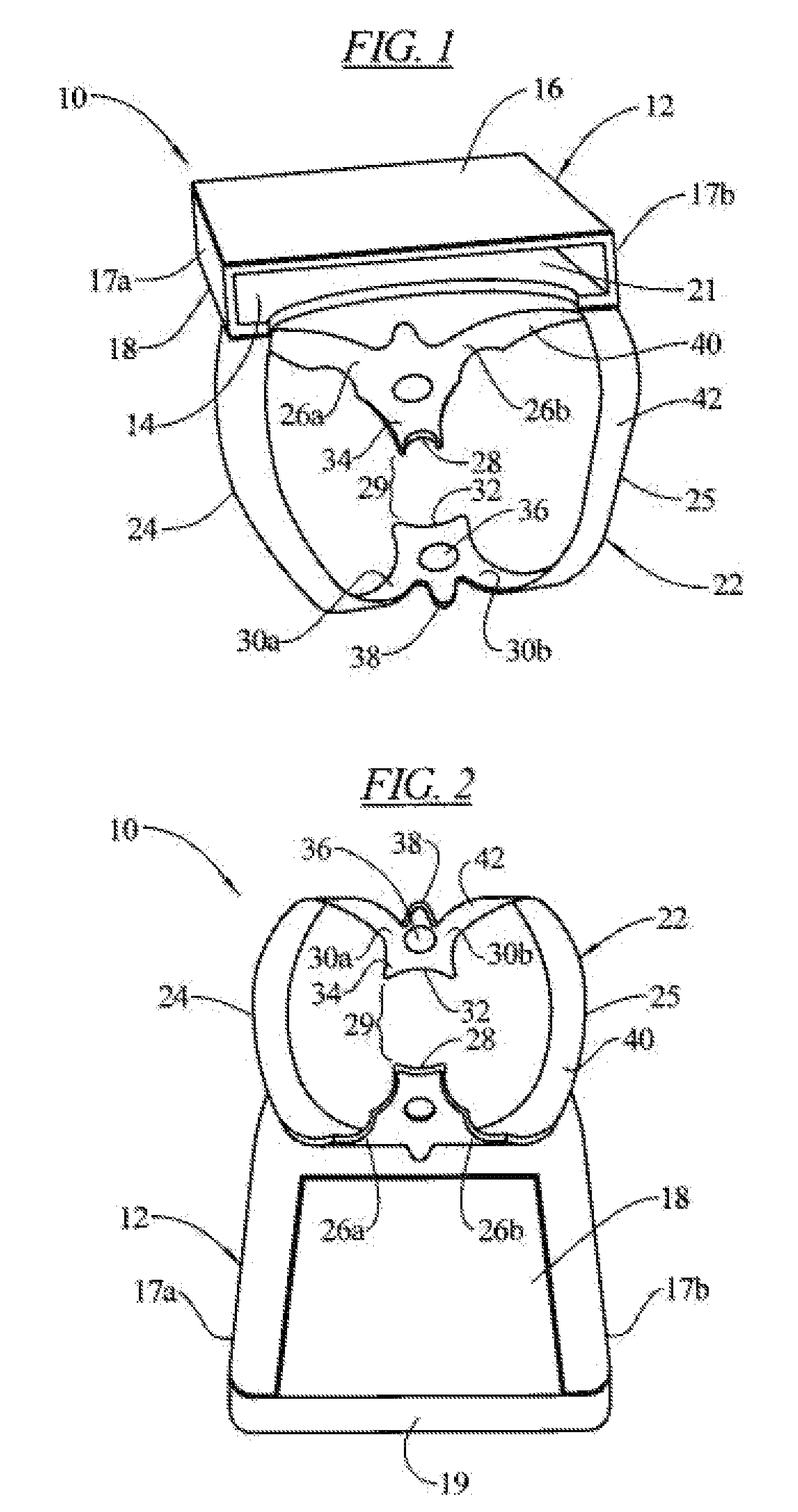Dental device having a sensor film holder with tooth clamp
a technology of sensor film and tooth clamp, which is applied in the field of dental devices, can solve the problems of contamination entering the patient's mouth or tooth, not always easy or comfortable for the patient, and the need to retake the radiograph, so as to reduce the patient's exposure to excessive radiation, improve the accuracy of alignment, and reduce the difficulty of angulation
- Summary
- Abstract
- Description
- Claims
- Application Information
AI Technical Summary
Benefits of technology
Problems solved by technology
Method used
Image
Examples
Embodiment Construction
[0033]It is to be distinctly understood at the outset that the present invention shown in the drawings and described in detail in conjunction with the preferred embodiments is not intended to serve as a limitation upon the scope or teachings thereof, but is to be considered merely as an exemplification of the principles of the present invention.
[0034]Referring now in detail to the drawings, wherein like reference characters designate like or corresponding parts throughout the several views, there is illustrated in FIGS. 1 through 4 an improved dental device 10 constructed in accordance with the principles of the present invention. In particular, FIG. 1 is a perspective view of the dental device 10. FIG. 2 is a bottom plan view of the dental device 10. FIG. 3 is a perspective view of the dental device 10 mounted onto a tooth with the rubber dam removed for the sake of clarity in illustration. FIG. 4 is a perspective view of the dental device 10 being mounted onto a tooth with the use...
PUM
 Login to View More
Login to View More Abstract
Description
Claims
Application Information
 Login to View More
Login to View More - R&D
- Intellectual Property
- Life Sciences
- Materials
- Tech Scout
- Unparalleled Data Quality
- Higher Quality Content
- 60% Fewer Hallucinations
Browse by: Latest US Patents, China's latest patents, Technical Efficacy Thesaurus, Application Domain, Technology Topic, Popular Technical Reports.
© 2025 PatSnap. All rights reserved.Legal|Privacy policy|Modern Slavery Act Transparency Statement|Sitemap|About US| Contact US: help@patsnap.com



